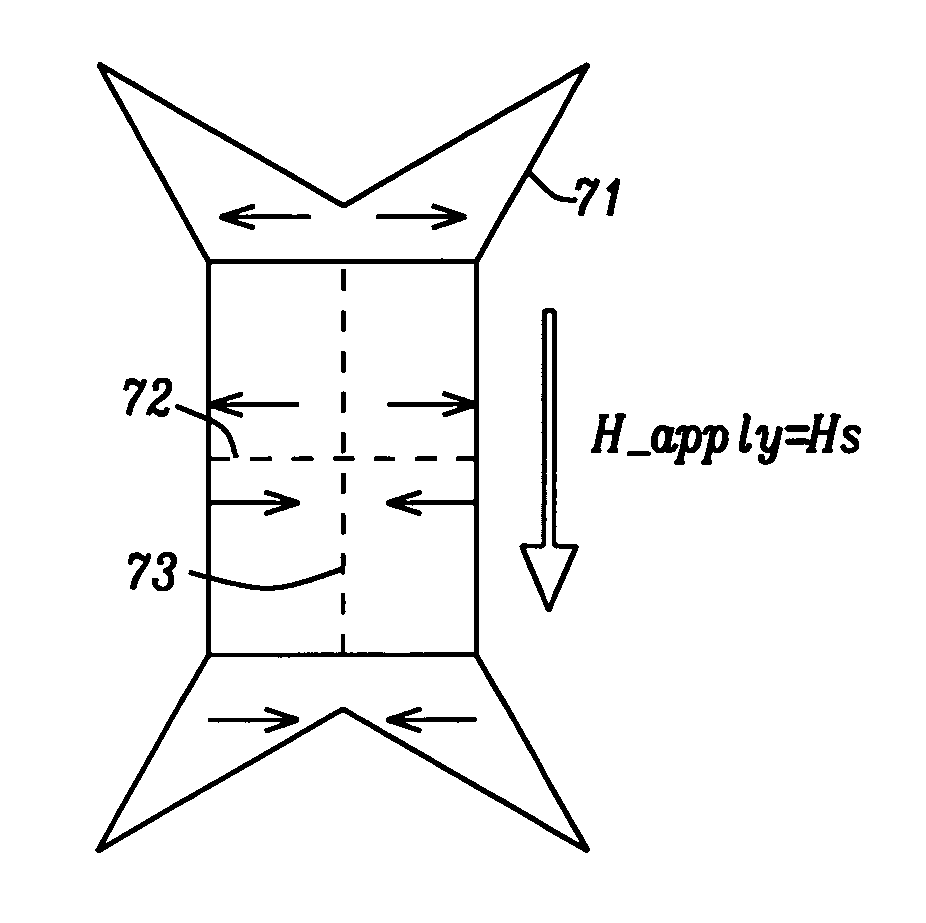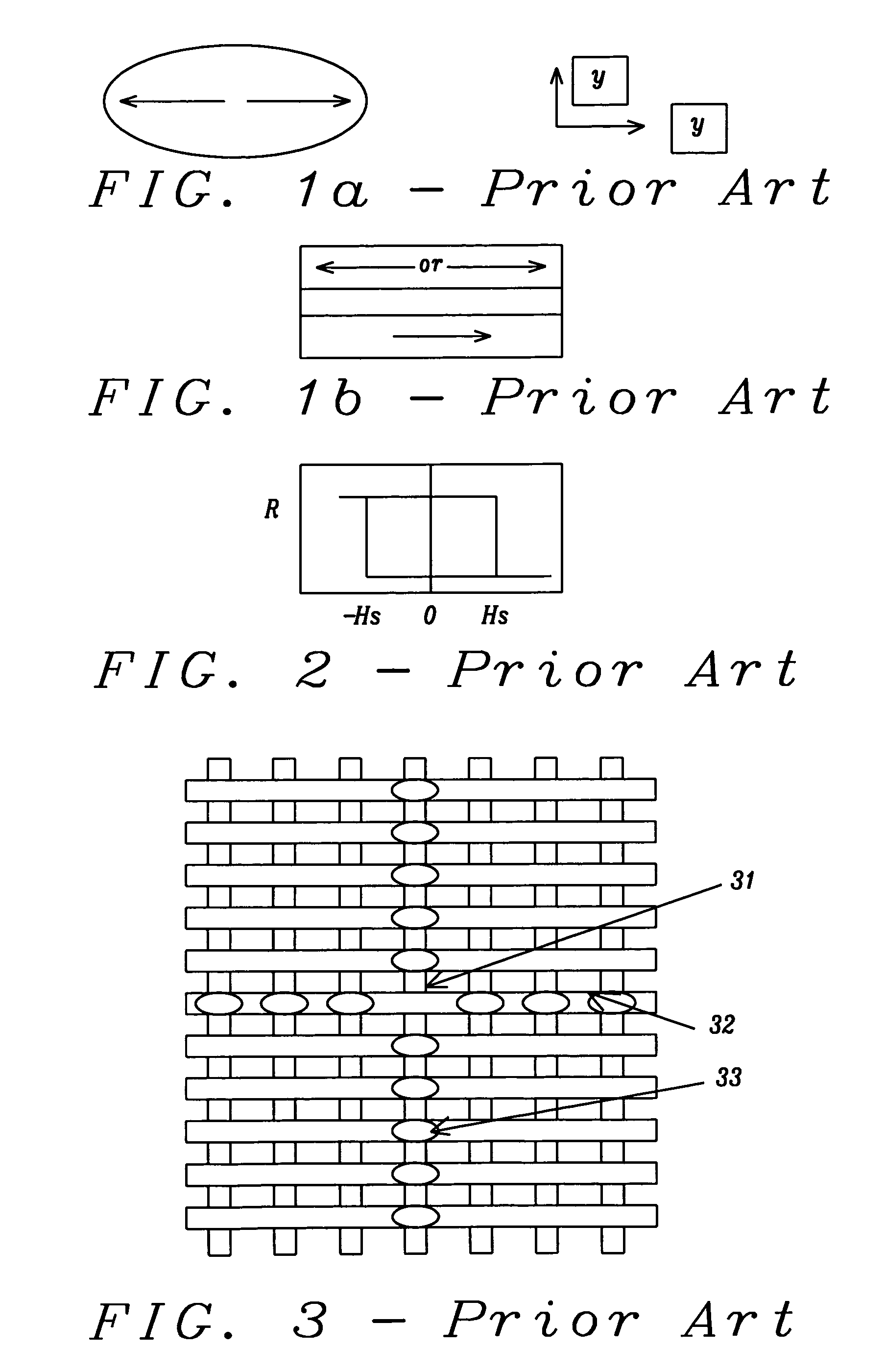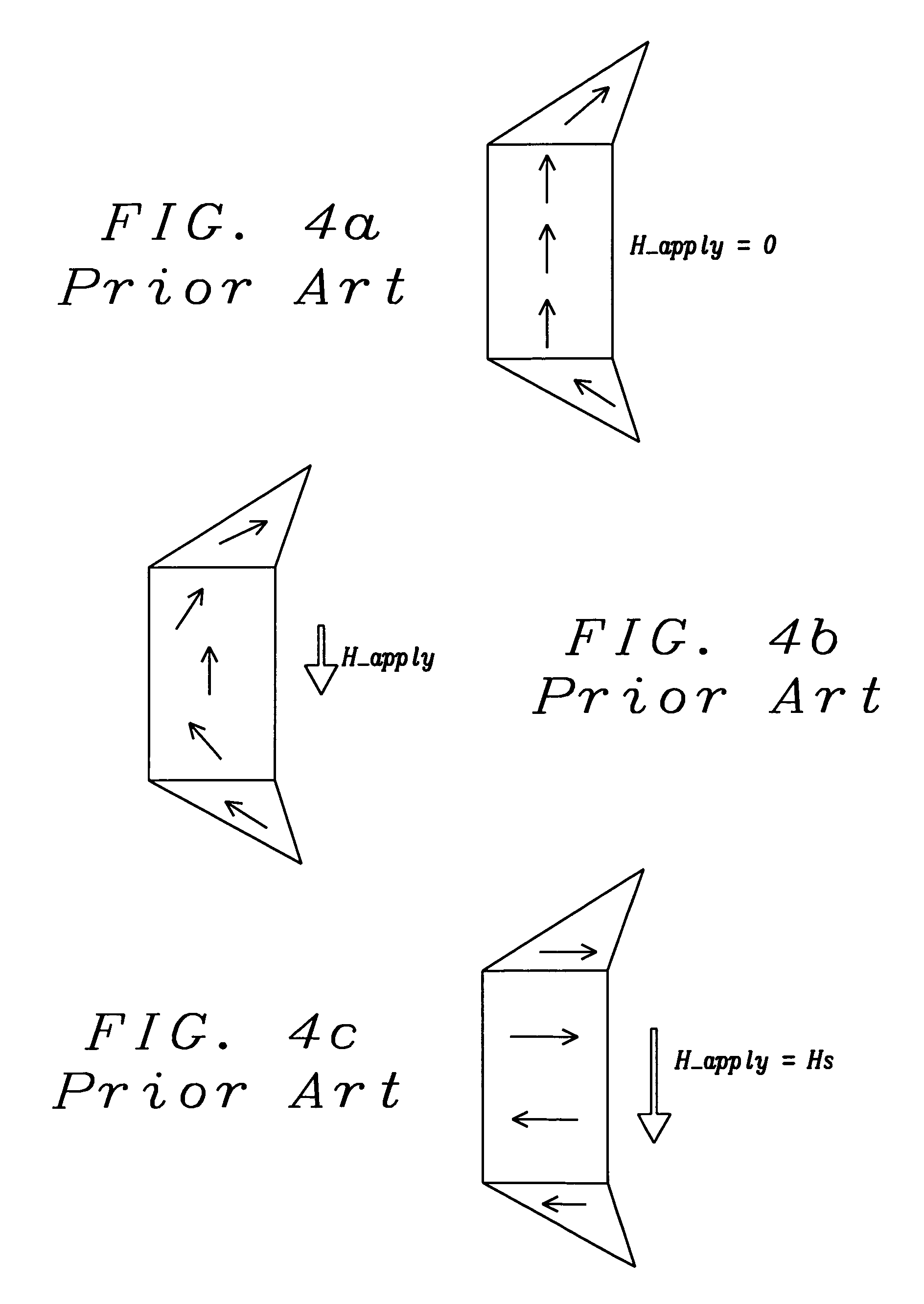MRAM with cross-tie magnetization configuration
a magnetization configuration and cross-tie technology, applied in the field of magnetoresistive memory elements, can solve the problems of higher bit and word currents, errors may occur in half-select cells, etc., and achieve the effect of reducing half-select errors, raising the switching energy barrier of the free layer, and not increasing programming currents
- Summary
- Abstract
- Description
- Claims
- Application Information
AI Technical Summary
Benefits of technology
Problems solved by technology
Method used
Image
Examples
Embodiment Construction
[0031]The invention discloses a new design for the shape of the free layer in a magneto-resistive device that is part of an MRAM. This design confines the quiescent free layer magnetization in a new state, the cross-tie (x-tie) state, as schematically illustrated by the example shown in FIG. 7a. The key feature of this design is that there are branches 71 that extend away from the top and / or bottom corners of the cell in the same general direction as a diagonal while also bending somewhat towards the hard axis direction. This type of cell shape forces the quiescent magnetization states of the free layer into a cross-tie (x-tie) configuration, as indicated by the arrows in FIG. 7a.
[0032]During switching, the magnetization in the branches serves to guide the central magnetization to rotate toward the hard axis, but in opposite directions (see FIG. 7b), creating, at switching, a pair of transient domain walls of opposite sign to each other (simplistically illustrated in FIG. 7c). Thes...
PUM
 Login to View More
Login to View More Abstract
Description
Claims
Application Information
 Login to View More
Login to View More - R&D
- Intellectual Property
- Life Sciences
- Materials
- Tech Scout
- Unparalleled Data Quality
- Higher Quality Content
- 60% Fewer Hallucinations
Browse by: Latest US Patents, China's latest patents, Technical Efficacy Thesaurus, Application Domain, Technology Topic, Popular Technical Reports.
© 2025 PatSnap. All rights reserved.Legal|Privacy policy|Modern Slavery Act Transparency Statement|Sitemap|About US| Contact US: help@patsnap.com



